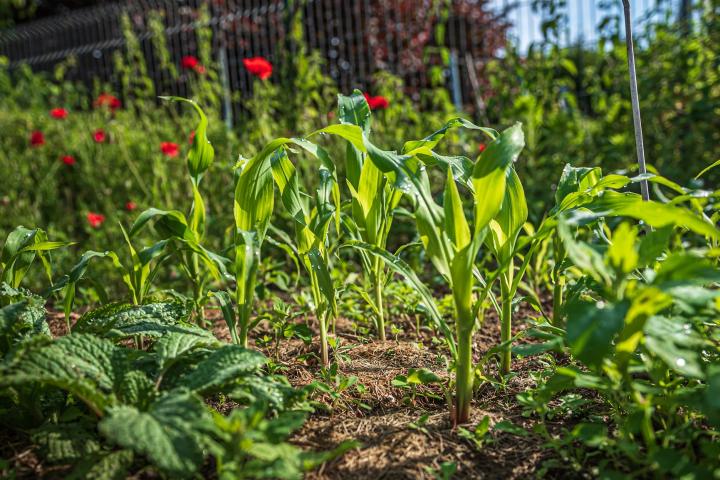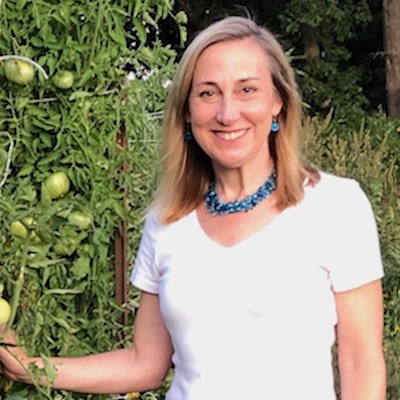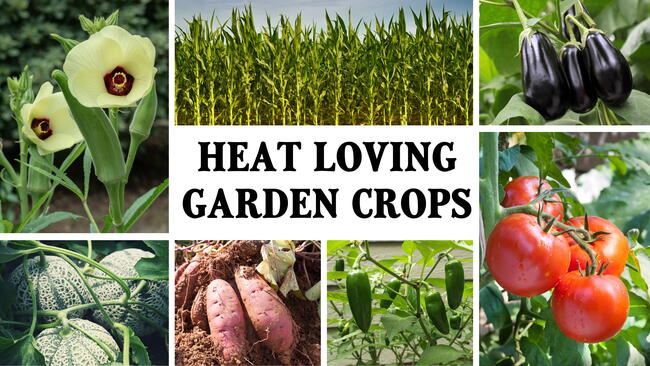
Planting, Growing, and Harvesting Sweet Corn
Read Next
Types
Types of Sweet Corn
There are four main types of hybrid sweet corn: sugary (su), sugar-enhanced (se), shrunken (sh, sh2), and synergistic (sy). Each one contains a different level of sucrose, changing the flavor and texture of the corn. The type of corn will be listed right on the seed packet.
It’s important to be aware of which type of corn you’re growing—not only because of the sugar content, but also due to how easily the types can cross-pollinate. If the wrong combination of types cross-pollinates, the ears that are produced may be of subpar quality.
- Sugary (su) sweet corn is the classic sweet corn. Sugary varieties grow vigorously and are stress resistant. The kernels aren’t too sweet and are said to have a “traditional” taste. However, the sugars in sugary sweet corn quickly turn to starch after the ears are picked, so they need to be eaten right after picking. Do not plant near shrunken or synergistic types.
- Sugar-enhanced (se) sweet corn is slightly sweeter than sugary varieties. They keep their sweetness for a longer period of time after harvest (a few days) than sugary varieties. They grow well with few issues. Do not plant near shrunken types.
- Shrunken (sh, sh2) sweet corn—also called “supersweet”—are the sweetest varieties, containing two to three times more sugar than sugary varieties. The sugar in their kernels lasts even longer after harvest (up to a week) than the other types, but kernels tend to be more crunchy and not taste as “corny.” Shrunken types are also more finicky overall. Do not plant them near any other types; hybrid kernels turn out starchy and tough.
- Synergistic (sy) sweet corn combines sugar-enhanced with one of the other two types to create varieties that have the best of both worlds. Synergistic types tend to have very sweet, tender kernels with a good taste and some synergistic varieties can keep up to a week after harvest. Do not plant near sugary or shrunken types.
Recommended varieties include:
- ‘Argent’: sugar-enhanced variety, good taste. White kernels.
- ‘Iochief’: midseason, normal-sugar variety. Yellow kernels.
- ‘Luther Hill’: dwarf, normal-sugar variety. Produces 4- to 6-inch ears on 4- to 5-foot stalks. White kernels. Grow at least nine dwarf plants in a block of three or four rows.
- ‘Silver Queen’: normal-sugar variety. Resistant to some bacterial diseases. White kernels.
- ‘Sweet Sunshine’: supersweet variety. Disease resistant and high yield. Yellow kernels.
Corn can be a feast for the eyes, too! Look for these ornamental varieties:
- ‘Glass Gem’: Sporting multi-colored, semi-transparent kernels, this is a favorite for kids.
- ‘Painted Mountain’: Looking for the classic “maize” colors? This variety has a great diversity of natural tones. Check out our video to learn more about growing and using painted mountain corn.

Gardening Products
Cooking Notes
- If too much hot pepper or spice has been added to a soup or stew, adding a can of sweet corn can help.
- Popcorn is also a favorite snack if you have leftover kernels. Learn how to make homemade popcorn here.
More Like This
Comments
In a healthy crop, removing the suckers, also called tillers, makes little difference to the harvest yield or health of the plant, since they usually appear later in the season and can't compete with the main stalk. Their formation may indicate healthy conditions; some varieties tend to form suckers more often. If the crop had been damaged early in the season, or the plants are widely spaced, a corn plant may respond by growing suckers; in these cases, sometimes those suckers will produce harvestable ears. Otherwise, in a healthy, closely spaced crop, they won't usually.
If you'd like to remove suckers, only do so when they are very small, to prevent damage to the stalk; removing them when they are larger will weaken the plant and invite insects and diseases.
For more information, you might be interested in:
http://www.agry.purdue.edu/ext/corn/news/articles.03/Tillers-0623.html
- « Previous
- 1
- 2
- …
- 10
- Next »












Go to our squirrel page at http://www.almanac.com/content/squirrels for tips.